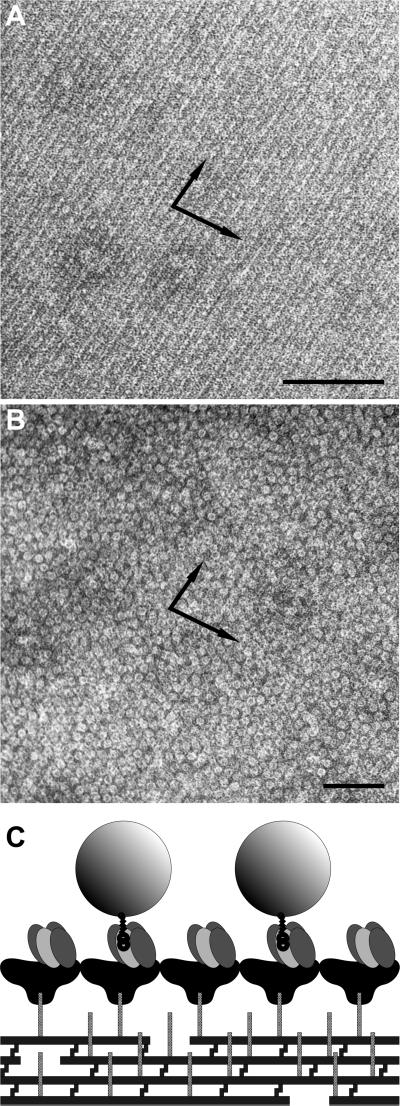Fig 5.
Cell wall fragments carrying a chimeric S-layer formed by the fusion protein BS1(S1)3 (A) were capable of binding biotinylated ferritin (B). (A) Self-assembly was enabled by the specific interaction between an accessory cell wall polymer that is part of the cell wall of G. stearothermophilus PV72/p2 and the SLH domain of the fusion protein. (B) Bound biotinylated ferritin reflected the underlying S-layer lattice. The preparations were negatively stained with uranyl acetate for TEM. The arrows indicate the base vectors of the oblique p1 lattice. (Bars = 100 nm.) (C) The cartoon shows the orientation of BS1(S1)3 after SLH-enabled self-assembly with the streptavidin-carrying outer face of the S-layer exposed.

